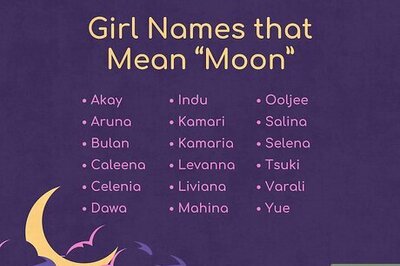
views
As Chandrayaan-3 scripted history by landing successfully on the moon’s surface on Wednesday, Indian Space Research Organisation (ISRO) quoted the spacecraft and said, “India, I reached my destination.”
Congratulating the nation, ISRO took to X (formally Twitter) said, ‘India, I reached my destination and you too!”
“Chandrayaan-3 has successfully soft-landed on the moon,” it added.
Chandrayaan-3 Mission:‘India????????,I reached my destinationand you too!’: Chandrayaan-3Chandrayaan-3 has successfullysoft-landed on the moon ????!.
Congratulations, India????????!#Chandrayaan_3#Ch3
— ISRO (@isro) August 23, 2023
This comes as the Vikram lander made a soft lunar landing at around 6.04 PM IST on August 23.
With this, India became the first country to reach the uncharted south pole of Earth’s only natural satellite.
India also became the fourth country to master the technology of soft-landing on the lunar surface after the United States, China and the erstwhile Soviet Union.
After the soft-landing, the rover will descend from the lander’s belly, onto the Moon’s surface, using one of its side panels, which will act as a ramp. On landing the lander may have to face the challenge of lunar dust due to firing of onboard engines close to the moon’s surface.
The lander and rover will have a mission life of one lunar day (about 14 earth days) to study the surroundings there. However, ISRO officials do not rule out the possibility of them coming to life for another lunar day.
Chandrayaan-3
Chandrayaan-3 comprises an indigenous lander module, a propulsion module, and a rover. Its objectives include the development and demonstration of new technologies required for interplanetary missions.
The lander will have the capability to make a soft landing at a predetermined lunar site and deploy the rover, which will perform chemical analysis of the lunar surface during its mobility phase, as per reports.
Scientists and astronomers suspect the presence of ice and valuable mineral resources in these dark regions. The exploration will not be limited to the surface but will also focus on studying the sub-surface and exosphere, as per reports. The rover will communicate with Earth using an orbiter borrowed from Chandrayaan-2. Surface analysis will be conducted by capturing images from a distance of 100 km above the lunar orbit.
The propulsion module is equipped with the Spectro-polarimetry of Habitable Planet Earth (SHAPE) payload, which is designed to conduct spectral and polarimetric measurements of Earth from the lunar orbit. This payload will provide valuable data and insights into the Earth’s characteristics and habitability from a unique vantage point on the Moon.
The first mission, Chandrayaan-1, was launched in 2008 and successfully entered lunar orbit. Chandrayaan-2, launched in 2019, also entered lunar orbit successfully but encountered a setback when its lander deviated from its intended trajectory and crash-landed on the moon’s surface due to a software glitch.

















Comments
0 comment